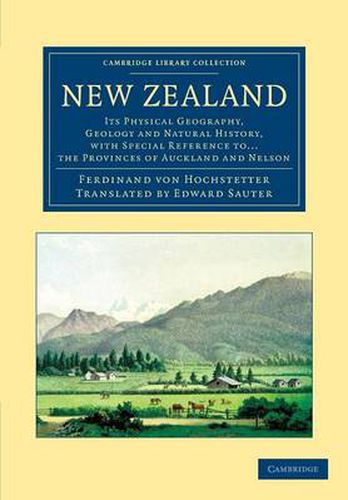Readings Newsletter
Become a Readings Member to make your shopping experience even easier.
Sign in or sign up for free!
You’re not far away from qualifying for FREE standard shipping within Australia
You’ve qualified for FREE standard shipping within Australia
The cart is loading…






Inhabited by Polynesians since the thirteenth century and discovered by Europeans in the seventeenth, New Zealand is a geologically diverse island group where active volcanoes and frequent earthquakes have resulted in a rich variety of rock formations and geothermal activity. In 1859-60, the geologist Ferdinand von Hochstetter (1829-84) was employed by Auckland’s government to undertake the first systematic geological survey of the islands, the results of which were first published in German in 1863 and translated into this English version in 1867. Hochstetter describes his travels across New Zealand, his encounters with native people and his scientific observations. He analyses plants, wildlife and fossils, describes mountains, rocks and boiling springs, and evaluates evidence of glaciers and tectonic activity. As a result of Hochstetter’s work, several species in New Zealand were named after him. This book remains a valuable resource in the history of Australasian natural science.
$9.00 standard shipping within Australia
FREE standard shipping within Australia for orders over $100.00
Express & International shipping calculated at checkout
Inhabited by Polynesians since the thirteenth century and discovered by Europeans in the seventeenth, New Zealand is a geologically diverse island group where active volcanoes and frequent earthquakes have resulted in a rich variety of rock formations and geothermal activity. In 1859-60, the geologist Ferdinand von Hochstetter (1829-84) was employed by Auckland’s government to undertake the first systematic geological survey of the islands, the results of which were first published in German in 1863 and translated into this English version in 1867. Hochstetter describes his travels across New Zealand, his encounters with native people and his scientific observations. He analyses plants, wildlife and fossils, describes mountains, rocks and boiling springs, and evaluates evidence of glaciers and tectonic activity. As a result of Hochstetter’s work, several species in New Zealand were named after him. This book remains a valuable resource in the history of Australasian natural science.